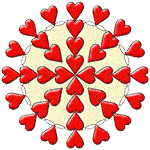

Spend $100 or More & Get 60% off - Use Code BULK60
OR Spend $500 or More & Get 65% off - Use Code BULK65
Spend $1000 or More & Get 70% off - Use Code BULK70
All Sales Final & No Returns. Excludes gift vouchers

Agates are a confusing bunch. Is Moss Agate truly an Agate? How about Blue Lace Agate? Tree Agate? In fact, only one of the three listed above is truly considered an Agate (Blue Lace Agate).
Traditionally, the Agate is defined as a fibrous cryptocrystalline variety of Quartz (SiO2, or Silicon Dioxide). Cryptocrystalline is identified as a "rock texture which is so finely crystalline, being made up of such minute crystals, that its crystalline nature is only vaguely revealed even microscopically in thin section by transmitted polarized light." - Wikipedia
Quartz with obvious mineral inclusions, but without concentric banding, is properly identified as Chalcedony. For instance, Moss Agate is not an Agate at all. It contains mottled inclusions of Chlorite, Hornblende or other minerals, but with no concentric banding. So the proper identification is a type of Chalcedony, even though its name suggests it is an Agate.
What sets the Agate apart from the Chalcedony family is the concentric banding. Often this banding can twist and turn in crazy, wild patterns. The banding can also appear to be in the form of a circle or ring like Eye Agate or even fine parallel lines, such as Botswana Agate. Without this banding, it is truly NOT an Agate.
You would think that Agates are common worldwide. However, most varieties are limited to specific areas. For instance, Blue Lace Agate is primarily found in the South African region of Kenya. Lake Superior Agate is found only in a specific area of the United States. Mexican Lace Agate comes to us from Mexico and is found nowhere else in the world. This is not to be confused with the incorrectly named Mexican Agate, which, in fact, is banded Calcite (carbonate rock) that is used for carvings, book ends, chess sets, etc.). Fire Agates are found only in the United States, while Pigeon Blood Agate is limited to the state of Utah. Botswana Agate is only found in the region of Botswana, Africa and so on. Most Agates are quite plentiful and inexpensive. However, there are Agates, such as the Fairburn Agate (aka Fortification Agate) which are unique and rare, only being found in Fairburn, South Dakota.
Agates come in a variety of colors, shapes, and sizes. The color of the Agate has to do with the mineral inclusions that are rich in that area. Many Agates, such as decorative "Plates" (thin slices of Agate displayed on plate stands) or Book Ends are dyed in order to bring out the banding patterns. This is quite common among Brazilian Agates.
Many other Agates are named from the locality in which they are found, such as Scot's Bay Agate, Montana Agate, etc. Others are named after the primary color of the Agate, such as Red Agate, Green Agate, Apricot Agate or Pink Agate.
Judy Hall gives us some insight into the Agate - "A grounding stone with a powerful multilevel cleansing effect, bringing about emotional, physical, and intellectual balance. Agate stabilizes energy and harmonizes yin and yang. It can bring hidden information to light. Soothing and calming, this stone works slowly but with great strength. Agate facilitates acceptance of your self and speaking your truth. Overcoming bitterness of the heart, it heals inner anger, fostering courage to start again. Encouraging assimilation of life experiences, Agate facilitates stable spiritual growth." Of course, depending on color and type of Agate, additional properties will apply.
Agates are a colorful group, located in a variety of places around the world. The main identifiers of a true Agate are its concentric banding, circular "eyes,” or parallel lines. Like many stones, Agates were used in ancient times as talismans and amulets. Today, they are an important tool to use in all aspects of spiritual growth. The variety and affordability of Agates makes it easy to use them in all types of healing modalities, meditation, crystal grids, or altars to Mother Earth and the changing of the seasons. They are also fascinating to look at. I highly suggest having a few Agates in your collection. You will be amazed at the information that they can share.
 Good info in general but lacking in some areas. I understand this is an old article but I will say this. Your article and many others like this really don’t have a clue about the Fairburn agates. The misinformation is abundant. Nothing is outright wrong but has anyone ever attempted to interview an actual Fairburn Hound? It appears not. (Submitted by: Hymey on August 22, 2020) Good info in general but lacking in some areas. I understand this is an old article but I will say this. Your article and many others like this really don’t have a clue about the Fairburn agates. The misinformation is abundant. Nothing is outright wrong but has anyone ever attempted to interview an actual Fairburn Hound? It appears not. (Submitted by: Hymey on August 22, 2020) |
| Reply |
 great article! I found some geodes with beautiful crystals, but also a few with bands and circles. Just learning about this, so this article was very helpful. thank you so much. _3 (Submitted by: jenn on February 02, 2016) great article! I found some geodes with beautiful crystals, but also a few with bands and circles. Just learning about this, so this article was very helpful. thank you so much. _3 (Submitted by: jenn on February 02, 2016) |
| Reply |
| Read more articles like this in the following categories: |
| Crystal Healing Articles |
| Crystal Reference Library |
FACEBOOK
INSTAGRAM